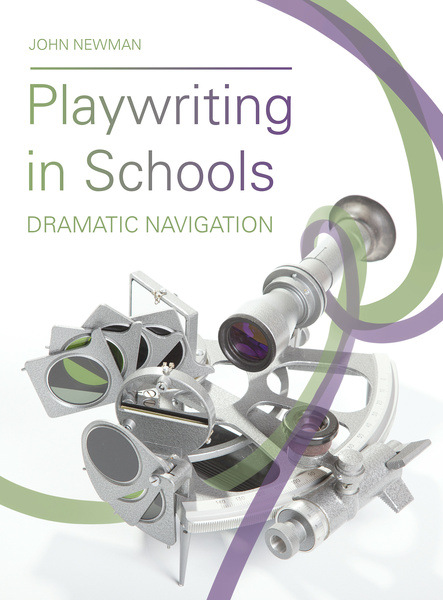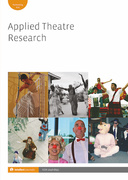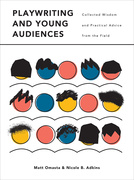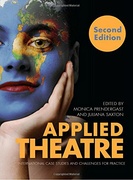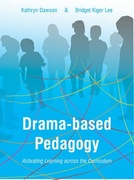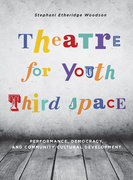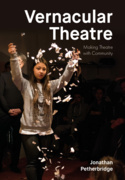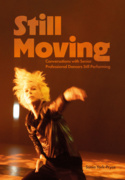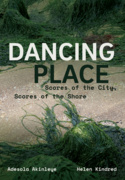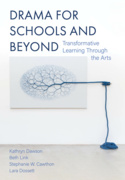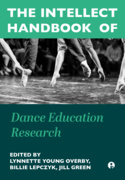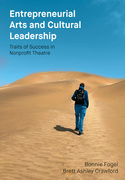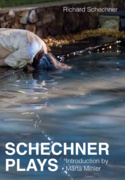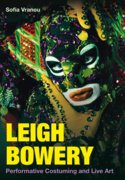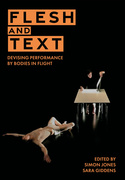Playwriting in Schools (Book)
Dramatic Navigation
John Newman invites teachers to take their students on a playwriting voyage in Playwriting in Schools. The book examines how students who learn to write plays and work with a professional playwright in residence empower themselves and gives instructors tools for teaching the process of playwriting in a way that makes space for the student voice.
Edition
John Newman invites teachers to take their students on a playwriting voyage in Playwriting in Schools. The book examines how students who learn to write plays and work with a professional playwright in residence empower themselves and gives instructors tools for teaching the process of playwriting in a way that makes space for the student voice. Playwriting in Schools investigates two main approaches for adult teachers and playwrights to use playwriting as a strategy for student self-expression. One approach is through the creation of fully-developed plays, written either by individual students with instruction from teachers or through interactions between a team of students and a teacher-playwright. The other approach is developing plays through collaborations among professional playwrights, teachers and student actors, crafting new plays in ways that suit the needs, interests and learning of young people. Throughout, Newman and the teachers and playwrights he features express themselves with an artistic generosity that encourages us to widen the scope of our own programmes by introducing students to the vast ocean of playwriting and play development.
Part of the Theatre in Education series.
John Newman is a theater professor living in Sandy City, Utah.
Credits
Acknowledgments
Foreword
Introduction: Navigating the Theatre Curriculum with Playwriting
Part I: The Practical Navigator – Charts, Tools, and Dynamics
Chapter 1: Phases of Playwriting
1. Preparation
2. Generation
3. Experimentation
4. Determination
5. Clarification
6. Exhibition
7. Examination
8. Production
9. Evaluation
Mapping devised theatre
Chapter 2: Generating and Workshopping Scripts
Preparing students
Grounding students in dramatic theory
Reading and analyzing plays as a class
Partnering with creative writing teachers
Introducing students to professional playwrights
Generating material
Visual image prompting
Rapid-fire prompting
Card prompting
Interviewing
Winnowing and drafting
Experimenting with possibilities
Classroom readings of initial drafts
Descriptive feedback
Variation drafts
World-building
Determining the center
Mural-making
Character tableau
Role-on-the-wall
Clarifying text
Question selection
Draft-tracking
Chapter 3: Presenting and Premiering Plays
Exhibiting scripts
Theoretical designs
Staged readings
Examining text
Written responses
Post-reading discussions
Day-after responses
In-the-moment responses
Producing new plays
Premiere productions
Actor interviews
Subsequent productions
Evaluating product and process
Chapter 4: Employing the Tarot Card Mode
The Tarot card model and exercise by Suzan Zeder
Why Tarot?
Leading the exercise
Creating the cards
Laying out the cards
Reading the cards
What the Tarot does
What the Tarot does not do
How to use the Tarot to develop plays in schools
Part II: Ports of Call – Learning Environments for Student Playwriting
Chapter 5: School Productions of Student-Written Plays
Collaborating with creative writing classes
Mentoring student directors and producers
Involving student playwrights in rehearsal
Sounding off: Teacher-advisors at East High School
Chapter 6: Developing Plays through Playwriting Contests
Developing plays through Thespian Playworks
Pre-workshop development
Collaborative casting
Role of the adult dramaturg
Role of the adult director
Theoretical designs
Publication of student-written plays
Developing plays through Young Playwrights for Change
Written feedback
Mentoring by adult playwrights
Staged readings and performances
Sounding off: Middle school playwrights
Chapter 7: Team-Playwriting with Students
Playwriting teams at Le Jardin Academy
Preparing student playwrights
Leading playwriting teams
Sounding off: Students on a playwriting team
Team-playwriting at Middleton High School
Chapter 8: Playwriting-Centered Drama Programs
Friends Academy: A community of equals
An inclusive production season
A vertical playwriting curriculum
Sounding off: Graduates of a playwriting-centered curriculum
Cleveland School of the Arts: A constellation of voices
A collaborating literature teacher
Playwriting-centered drama cohorts
Second draft strategies
A repertory of non-traditional productions
A festival of new works
Part III: Apprentice to a Playwright – Modeling Playwriting in School Residencies
Chapter 9: Preparations for a School Residency 149
Preparing for the voyage
Finding the playwright
Finding the school
Forging the agreement
Financing the venture
Manning the ship
The teacher-director
The teacher-director’s other hats
The playwright
Student actors
Student dramaturgs
Student designers
Expert student participants
Building bridges: Sharing power in play development
Chapter 10: Playwright Residencies at Highland High School
The ARK 5 Project
Development residency at Highland High School
Premiere production at Highland High School
Second production at Middleton High School
Mounting second productions
Developing novel adaptations
Developing a musical
Facilitating playwright residencies in schools
Mounting plays by the teacher-director and students
Addressing technical challenges
Employing guest directors
Reading additional plays by the guest playwright
Letting the playwright process the presentation
Acting with students to experience the text
Sounding off: Student actors in new plays
Chapter 11: Playwright Residencies at Other Secondary Schools
Playwrights In Our Schools residencies at DaVinci Academy
The residency for Escape from the Labyrinth by playwright Ric Averill
Itinerary of a school residency
The residency for Max Bush’s What Remains
Components of Playwrights In Our Schools residencies
Student preparation
Pre-residency development
Workshop exploration
Theoretical designs
Classroom visits
Mentorship of student playwrights
Informal interactions
Staged readings
Post-reading discussions
Chapter 12: Playwright Residencies and Visits at Primary Schools
Developing When She Had Wings with Lucy School students by playwright Suzan Zeder
Engaging with children in research
Discussing the script with children
Exploring design possibilities
Finding an alternate title
Involving children in rehearsal and production
Child learning in the script development of When She Had Wings
Project-based, arts integrated learning
Social skills development
Seeking clarity and dealing with ambiguity
Validating children’s perspectives
Design collaboration with children for When She Had Wings
Confronting limitations creatively
Balancing child perspectives with adult expertise
Emulating the “Wings Project”
Playwright classroom visits for Lily Plants a Garden with the Bonderman Symposium
Epilogue: Embarking on Your Voyage of Discovery
Appendix:
Books on teaching playwriting
Books on play development
Books on devising theatre
Online resources
References
Biographies
Index


